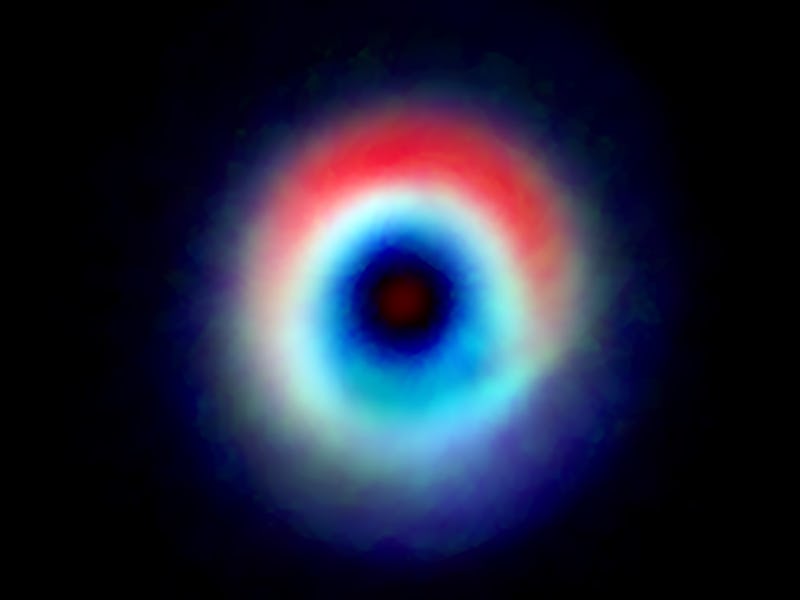How Planets Form Around a Binary Star
Finally, scientists figure out if that whole “two suns in ‘Star Wars’"thing is possible IRL.

For a long time, astronomers figured that a binary star system couldn’t possibly be host to any planets. The gravitational tug-of-war between two balls of intense light and energy would be way too much for any planets to handle — they’d be subjected to a strange orbits, sucked up by the stars themselves to meet a fiery doom, or thrown out of the neighborhood completely.
Well, it turns out that’s not true. Rejoice, Tatooine aficionados: Planets can indeed come together and maintain a stable orbit around not just one, but two stars!
A composite image of the HD 142527 binary star system from data captured by ALMA shows a distinctive arc of dust (red) and a ring of carbon monoxide (blue and green). The two dots in the center represent the two stars in the system.
Astronomers at the Atacama Large Millimeter/submillimeter Array (ALMA) radio telescope in northern Chile have been studying a planet-forming disk of dust and gas around a little binary star called HD 142527, hanging out just a mere 450 light-years from Earth. The system is comprised of a main star just a little over twice the mass of the sun, and a smaller, sidekick star about one-sixth the size. Though separated by about 1 billion miles, they are locked into a loving orbit of one another.
Around these star-crossed lovers is a pretty significant amount of dust and gas. Under the right gravitational force, this stuff usually collects together into celestial bodies we call planets. HD 142527, the ALMA scientists discovered, has a planetary disk in the same of broad elliptical ring. It’s way out there — about 50 times farther from its host star(s) than the Earth is from the sun.
That crescent, the researchers think, may be caused by the gravitational force of the binary stars, and could explain for planets can form in even such a unique star system.
Artist impression of the HD 142527 binary star system based on data from ALMA.
The research group recently presented their findings at at the annual AAAS meeting in Washington, D.C., and is currently working a paper that will better detail their observations and how they believe protoplanets can form around binary stars. The findings are just a small first step for this research question, but it’s certainly an encouraging though to think a planet can have two suns. Because there’s also the possibility that a planet with two suns might be habitable.
*Cue Cantina Theme from Star Wars*